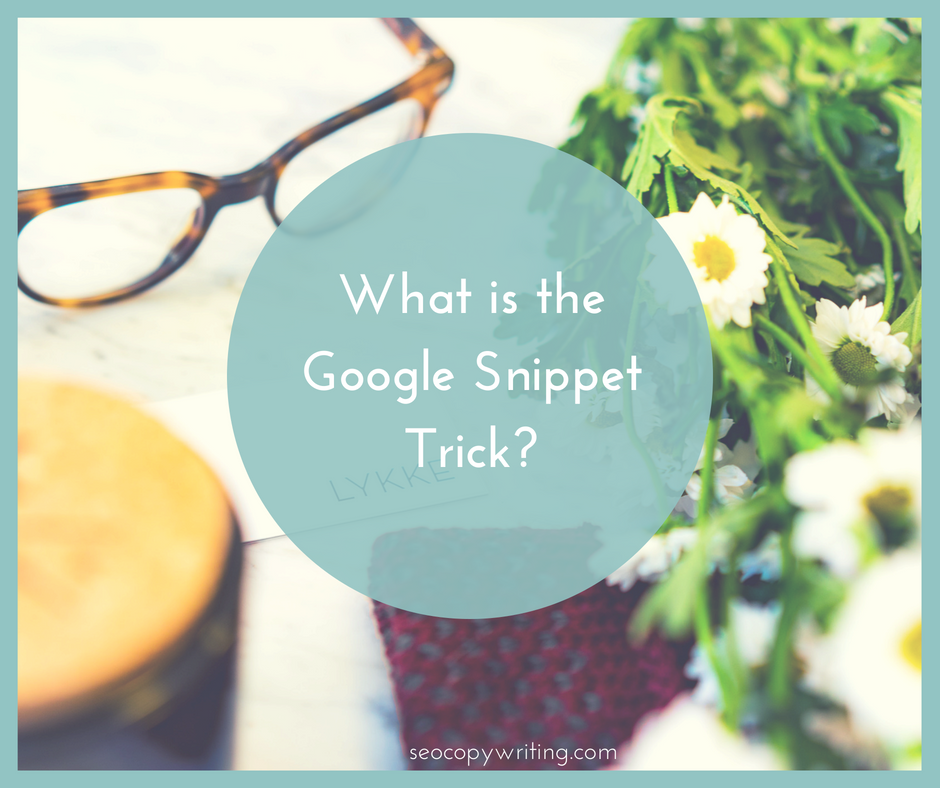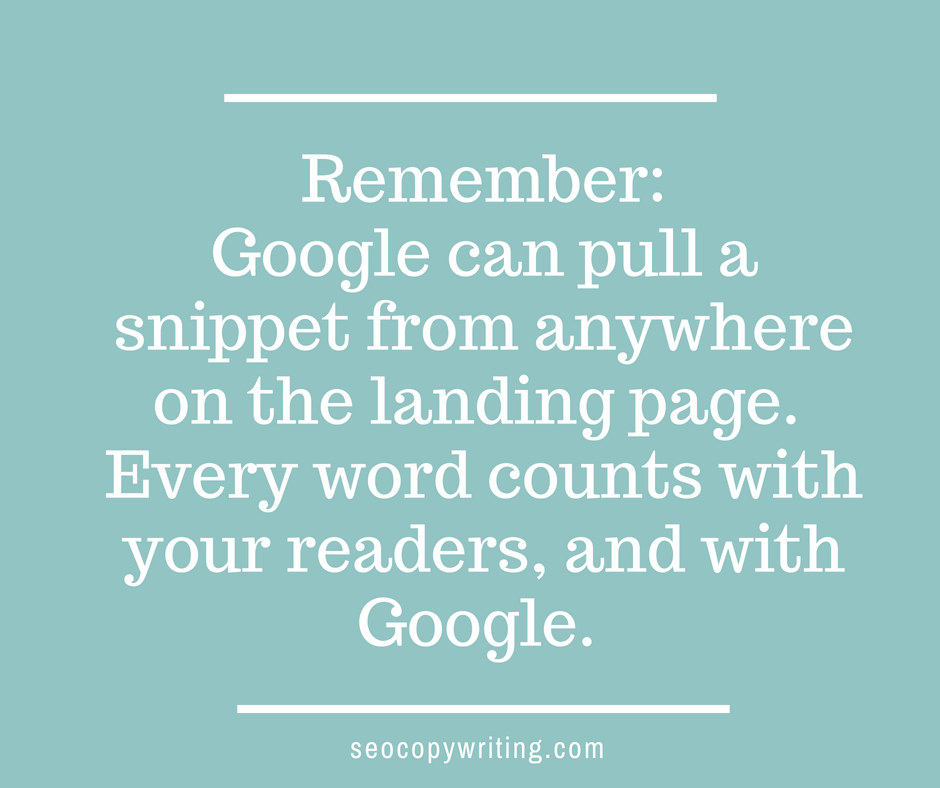How to Master Meta Descriptions With the Google Snippet Trick
The more things change, the more they stay the same.
Last week, I came across a Yoast article discussing Google’s longer meta descriptions (Google doubled the room we have for meta descriptions last year — from 160 characters with spaces to 320.)
The first paragraph contained a sentence that made me laugh:
“It appears that Google very often creates a meta description by itself…”
Basically, the author is saying that Google will often disregard our submitted meta descriptions and use a snippet of text from the landing page, instead.
(For those new to snippets, you’ll find the meta description snippet underneath the clickable link on the search engine results page — and the search term — or close variations — are typically bolded.)
Is this true? Is Google doing a meta description switcheroo?
Yes. But, here’s the deal…
This has been true for a long time. In fact, I remember writing about the Google Snippet Trick back in 2003 or so.

What’s the Google Snippet Trick? I’m glad you asked…
It’s simple.
When you write your page copy, try to include a benefit statement or call-to-action near the first instance of your main keyphrase (which is typically in the first paragraph.)
That way, when Google does grab a snippet of text for the search engine results page, your copy has as much marketing oomph as possible.
For instance, if you do a search for [SEO copywriting training], the search snippet for my site reads:
Endorsed by organizations such as seoPros.org and AWAI, the SEO Copywriting Certification training is a self-directed training focused on web content and social media writing. The materials are continually updated, reflecting the latest search engine changes.
Yes! I’ll take it!
Yoast recommends spending extra attention to your main paragraph. Although I would agree, remember that Google can pull the snippet from anywhere on the landing page (for instance, my snippet is from the bottom of the page.)

So, yes, every word counts — not just with your readers, but with Google, too. If you write a bloated, sloppy page, your search snippet may also read bloated and sloppy.
And, since meta descriptions help your readers convert and click through to your site, sloppy writing will hurt more than help.
What should you do now?
Take a peek at Google search results for your main keyphrases (or, if you work as a content strategist, your clients’ keyphrases.)
How do the search snippets read to you? Are they strong, or is there room for improvement?
If you find your snippets suck, you could gently tweak the site content, and add benefit statements or calls-to-action. Per Yoast’s recommendation, you may also want to pay special attention to your first few sentences.
Remember, search snippets are something that Google “controls,” so you may not be able to move the needle.
But, it’s worth a try. Especially if a keyphrase is super-important to you, and you want your Title and meta description to sing.
After all, the more compelling your Title and description are, the more chance your prospect will click through to your site — even if you’re not #1.
Cool, eh?
BTW, it’s still important to create a meta description, even if Google doesn’t always use it. After all, you don’t know when Google will make up its own snippet — or rely on your site for the answers. Why not err on the side of caution and spend three minutes crafting a cool description?
What do YOU think? Post your comments below — I’d love to hear from you!




Hey Heather
As always I look forward to a post from you across here in Scotland and as you know always interested in what you say – cause you know I believe in you…
But I did that test you mention in your post about entering into Google your search term mention – seo copywriting training – and I was served up a completely different Meta Description Snippet –
==============================================================================
Interested in online SEO copywriting training? Are you looking for free SEO content tips? Or, does your team require a customized SEO writing training solution …
==============================================================================
I thought I might be looking for an inside page that is focused on that topic and expect to see
seocopywriting.com/seo-copywriting-training – but could not see if you had a page on this.
So, has something changed or are we seeing also Google serving up something different 4000 miles away?
As always interested in your view on this.
We are still missing you over here by the way, you should come and do a UK tour!!
BRIAN!
It’s always wonderful to hear from you!
Yup, I see the same result as you. There may also be a result for the SEO Content Institute — that’s my site too. At the same time, Google probably is serving up different information at different times (and in different places.) So, as you know, this is normal. As normal as Google gets — ha!
Love to do a UK tour someday. If only a company would invite me… ;)
Thanks, Brian! :)
Heather, thanks for your article! I read that article from Yoast as well and I felt kind of delusion about meta description. This “call-to-action” suggestion from you is awesome. Will start to use it right the way. I would have one question: you mentioned your own meta description as an example, and it is on the bottom of your website. From a meta description purpose what would you say about multiple call-to-actions?
@Consuelenza, hi! Thanks for posting!
To clarify, do you mean multiple CTA in your meta description? Or your page content? Thanks!
Hey Heather, Really interesting article.
While writing meta descriptions, I always make sure that main key-phrase is at the beginning of the sentence. But I never gave much thought to include clear CTA. After reading this article, I am seriously considering to rewrite our website’s meta tags. I will start this experiment with webpages which are ranking low and see how it works out for me.